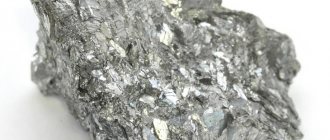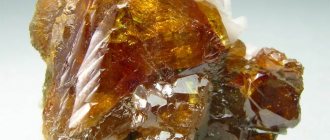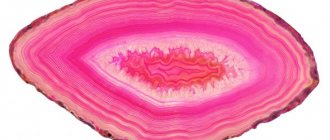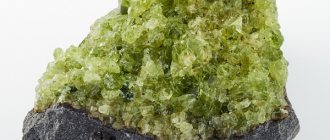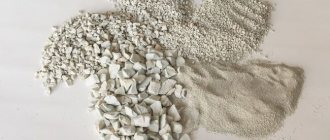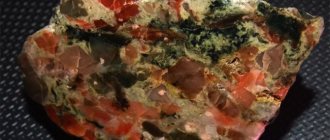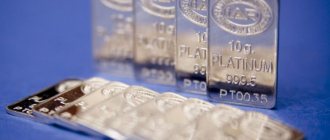Recently, one can increasingly hear the question of where palladium is used and how to extract it. This is not at all accidental, because its value and nobility play an important role. Many people want to acquire this expensive metal for various reasons, but not everyone succeeds. It is difficult to accidentally discover palladium just walking along the road, although this may well happen to the lucky ones.
The article will tell you about the properties and uses of palladium, as well as its current prices. The information will be of particular interest to connoisseurs of precious metals. Even though active mining of this element began not so long ago, its popularity has already grown quite well.
Properties
Before we talk about where palladium is used, it is worth knowing why it has become so relevant today. In fact, this was facilitated not only by its noble origin, but also by its incredible properties, of which this metal has quite a few.
In science, there are three main groups of properties: physical, chemical and biological. These are the ones that need to be considered separately. This will give you a broader understanding of what the element in question is.
Content
- 1. History
- 2 Origin of the name
- 3 Finding in nature 3.1 Obtaining
- 3.2 Production indicators
- 4.1 Isotopes
- 6.1 Catalysts
Physical
Speaking about where palladium is used and where it came from in the first place, it is worth mentioning an English chemist named William Wollaston. It was he who received this metal back in 1803. And the name of this element was given in honor of the asteroid Pallas, which became known to the world shortly before this metal was discovered in the laboratory. In those days, it was difficult for people to find a purpose for a new element, so it had to lie idle for a certain period of time.
Palladium itself has a silvery-white hue. As for its appearance, it resembles ordinary silver. The following physical properties were discovered for this element:
- boiling point – 2,940 °C;
- density – 12.0 g/cm3;
- elastic modulus – 12,600 kgf/mm2;
- melting point – 1554 °C;
- Brinell hardness – 52 kgf/mm2.
It is also worth noting that even today the metal in question is recognized as one of the rarest on the planet. On the entire earth it is present only 0.000001%.
Another interesting ability of the element is the change in its structure starting from heating from 18 °C. And with a further increase in this indicator, the changes become irreversible.
Scientists add platinum group elements to palladium. Due to this, they manage to significantly improve the properties of the precious metal. For example, when ruthenium and rhodium are added, the chemical element becomes twice as strong and elastic.
origin of name
Named after the asteroid Pallas, discovered by the German astronomer Olbers in 1802, that is, shortly before the discovery of palladium. In turn, the asteroid is named after Pallas Athena from ancient Greek mythology. Palladium, or Palladium, is the legendary wooden image of Pallas Athena that fell from the sky; according to the prophecy of Helen (son of Priam), Troy will remain indestructible as long as this talisman is kept within its walls. According to legend, only after the goddess’s favorites, Odysseus and Diomedes, stole Palladium during a night raid, did this stronghold fall.
Chemical
The active use of palladium in various fields of activity is also explained by its chemical properties. First of all, it should be noted that it has a fairly high inertness, as well as galvanic resistance, which is extremely rare among modern metals. Such properties are explained by the atomic structure of the element. It is also worth saying that it does not interact in any way with acids, water molecules and alkalis, so it will not be possible to carry out the simplest school experiments on it, although hardly anyone will agree to get it for such purposes.
If you heat the metal to 350 degrees, its resistance will remain stable. But as this indicator increases, it will begin to oxidize. As a result of this reaction, a dull oxide film is formed on the metal surface. If you heat it to 850 degrees, you can observe its disintegration. This phenomenon is explained by the fact that in the temperature range from 800 to 850 degrees the element is already resistant to oxidation and does not succumb to it.
Not long ago, scientists discovered one interesting fact. Its essence is that a solution of nitric acid can make a pure titanium plate thinner by 19 mm per year, and in the case of an alloy of palladium with the same titanium, thinning will occur much more slowly - only 0.10 mm per year.
Heating up to 500 degrees, the element successfully interacts with various oxidizing agents, including fluorine. Thanks to this, scientists have been able to conduct a lot of research.
An additional chemical property of palladium is its ability to enhance the anti-corrosion capabilities of titanium. When a precious metal is added to this element, its resistance to aggressive environments increases significantly.
Extraction methods
Work with palladium deposits is carried out in two forms:
- closed (mine);
- open (career).
In closed mining, mining is carried out through the formation of a system of tunnels underground - mines. Small holes are formed in the ore layer, and an explosive is placed in them. The soil, after loosening by explosion, is processed to release mineral particles. Once the initial refining is complete, the ore is transported to the surface to be transported to the processing site.
In the second method, work is carried out using heavy earth-moving equipment and vehicles for transporting previously obtained ore. She is helping to develop an underground mine used to extract palladium. Then everything is transported to processing plants.
Palladium veins are located mainly in Russia and South Africa - 41% and 39% of global production, respectively. Next come Canada (9%), USA (6%) and Zimbabwe (3%). Only 2% of production comes from other countries.
World reserves of palladium, according to various sources, vary. Some sources report that its reserves are 2-3 times greater than gold, others believe that it is 20 times less.
Where is palladium mined?
Today it is worth thanking for the use of palladium in Russia. It is she who holds the first place in the production of this precious metal. The holding produces about 41% of palladium raw materials around the globe. The main deposits are located on the Taimyr Peninsula, which is located in the Arctic. There are copper-nickel deposits there, where activities are being carried out to extract the precious element.
South Africa is considered the second country in terms of palladium production. There are deposits here that provide about 38% of the world's metal production.
The remaining share, which is 21%, is divided into several fields located in the following countries:
- Canada – 9%;
- Zimbabwe – 3%;
- North America – 6%;
- Colombia, Australia and others (together) – 3%.
Search for palladium veins
Mineral inclusions are usually searched for in places where copper, silver, and nickel ores occur. Sometimes you can find small deposits containing nuggets of pure substance.
In the depths of the planet, minerals are found only in the form of compounds with others. Some of them have hardly been studied and have not received their name. The most famous satellites of palladium are:
- braggite;
- palladite;
- potarit;
- stannopalladite.
It is often recovered in combination with gold and platinum veins.
In the depths of the planet, the substance is present in the form of compounds of various metals. The veins can be found in Europe, America and Russian open spaces.
Palladium is the most difficult to find in nugget form, as it is often combined with other minerals and, once extracted, is separated through chemical processing.
All deposits are divided into 2 types:
- Indigenous, in which palladium is presented in the form of compounds with other minerals.
- Placers, in which the mineral is in the form of nuggets accumulated over a long time. They are located in the area of large deposits.
Importance in Jewelry
The use of palladium in the jewelry industry is especially important, since products with its participation are quite attractive and delight the eye not only of beautiful ladies, but also of the opposite sex. As a rule, the metal in question is used as an independent decoration, but sometimes acts as an addition to items made of silver and gold. It is not customary to combine it with other precious metals. In addition, products with his direct participation are almost never complemented with valuable stones.
Purchase and sale
Palladium jewelry can be purchased at jewelry stores. World-famous designers often make their products with the inclusion of precious metal. In such cases, you can purchase the products you like through company stores. It is recommended to buy souvenir coins through a bank, which guarantees that it will be a real product.
The return of precious souvenirs can be done through banks. It is important to meet several conditions: maintain the coin’s certificate and its impeccable appearance. Jewelry is bought well by pawn shops. If the products are damaged, they are accepted at the price of scrap.
The price of palladium is lower than platinum or gold, but various factors influence the formation of the price, so it can change daily.
Palladium in the automotive industry
The use of palladium in industry, or more precisely in the automotive industry, is not so widespread. Only catalysts are manufactured with his participation. Although for several years now scientists have been thinking about where else this element can be applied in this area.
Recent statistics indicate that in recent years the amount of palladium used in the automotive industry has decreased by approximately three times. Although at the same time its production was increased by more than 25%. The reason for such phenomena lies in the cost of metal - it grows along with the needs of the automotive industry.
Other Applications
Where is palladium used in industry? The list of industries provided above is not exhaustive. Such a precious element is also actively used in the following areas:
- Electrical and electronic. Here, the metal in question takes an active part in the creation of thermostats, capacitors, thermocouples, and electrical connectors. All this with the participation of the element in question began to happen not so long ago. The technology gained popularity quite quickly, so there are no plans in this direction for now regarding the elimination of palladium altogether or the addition of new products based on it.
- Chemical. Workers in this industry actively use the element as a catalyst, that is, a special accelerator for certain reactions. Unfortunately, it does not interact with all elements of the periodic table, but this does not prevent the development of new reactions with its direct participation.
- Investment. Oddly enough, palladium has found beneficial use here too. Valuable coins are minted from it and used for financial investments.
- Food. The element in question can also be found here. It is sometimes used to create tableware elements. This is ensured by the well-known fact that the precious metal is chemically neutral. At the same time, the products manufactured with his participation are practically no different from ordinary ones, but their price is an order of magnitude higher.
Prices
For one gram of palladium in its pure form you will have to pay at least 1,300 rubles. As for the products in which it is included, everything depends on the percentage of this metal content.
Specialists who buy a precious element independently divide the prices in this way:
- contacts, needles, knitting needles, etc. (palladium content is 18–28%) - about 350 rubles per gram;
- wrapping from strings and other things (80% of the element in the composition) - more than a thousand rubles per 1 g;
- coins (Soviet 5, 10 and 25 rubles - contain about 99.9% of this metal) - from 1,400 rubles;
- scrap radio components (limiters, resistors, SHIV ligature, gas mask filters) - the cost is calculated individually, based on weight, category of goods and other characteristics;
- palladium chloride (brown powder with crystals) – one thousand rubles per kilogram.
Stamps
Brands:
- Pd99.8.
- Pd99.9.
- PdA-0.
- PdA-1.
- PdA-2.
- PDAP-0.
- PDAP-1.
- PDAP-2.
- PdV-20.
- PdI-10.
- PdI-18.
- PdM850.
- PdSr-20.
- PdSr-30.
- PdSr-40.
- PdSrK-35-5.
- PdSrM-36-4.
PdSrN850-130, PdSrN500-450 are grades that are indicated on jewelry palladium.
Palladium (Photo: Instagram / radio_detali30)
